UC Gardening Blogs
Wreath History and Workshop
With the annual Master Gardener's Wreath Making Workshop coming up on December 1, 2018 (see the flyer below), I thought it might be interesting to look into the history of wreaths. What I discovered were two different histories of the wreath.
The first history dates the wreath back to the 8th century BC. In ancient times wreaths made from laurel, ivy, olive leaves, oak, wheat, and vines were worn as crowns by Etruscan rulers. In ancient Rome and Greece, wreaths were used to represent a person's status or accomplishments. Roman magistrates and leaders wore golden wreaths to demonstrate their lineage back to Rome's early Etruscan rulers.
Wreaths made of different plants had different meanings. For example, according to mythology, Zeus made decisions while resting in an oak grove, so wreaths made of oak symbolize wisdom. Laurel wreaths are often associated with love because according to Ovid's Metamorphosis, the target of Apollo's love, the nymph Daphne escaped his pursuit by being transformed into a laurel tree. Since he couldn't have her, he cut off a branch and proclaimed that since he could not have her, he would always wear her on his hair. So he's often depicted wearing a laurel wreath as a symbol of his love for Daphne.
The ancient Greeks are also credited with introducing wreaths made of bay laurel (native to the Mediterranean region) as a symbolic award to victors of military, music, poetry and athletic competitions. Because wild olive trees grew in Olympia where the Olympic Games were held, olive wreaths were awarded to victors of athletic games.
The other history of wreaths dates back to 1000 BC. It's believed that Pagans created the wreaths as part of the solstice celebration as a symbol of perseverance through a harsh winter and hope for the coming spring. It's theorized that in the 16th century Lutherans, Protestants, and Catholics in Germany adopted the wreath to celebrate Advent. Advent wreaths have four white candles, with a candle in the center, which is lit on Christmas Day. Advent and Christmas wreaths are made of evergreens as a symbol of growth and eternal life. Wreaths made of holly branches are symbolic of the crown of thorns Jesus wore when he was crucified, and the red berries represent the blood he shed for us.
If you are interested in making a wreath for the holidays, consider registering for the Wreath Workshop on December 1st. The Master Gardeners will provide you with instruction on making a wreath, and all the supplies (frame, evergreens and other decorations) needed to make a wreath. See the flyer below for registration information.
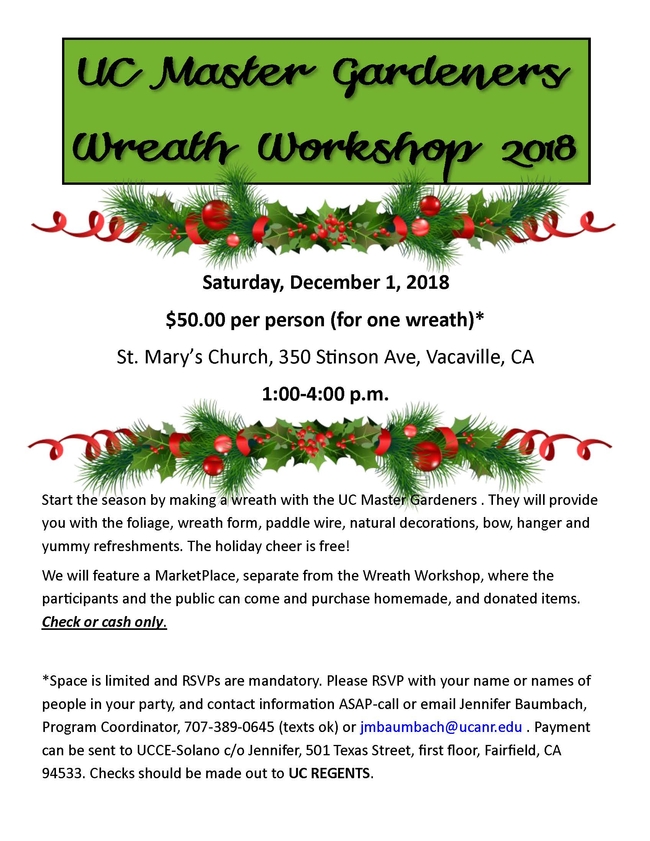
ww2018flyer
The Day That Cockroaches Stole the Show
It was the day that cockroaches stole the show. However, bed bugs, carpet beetles and pantry pests...
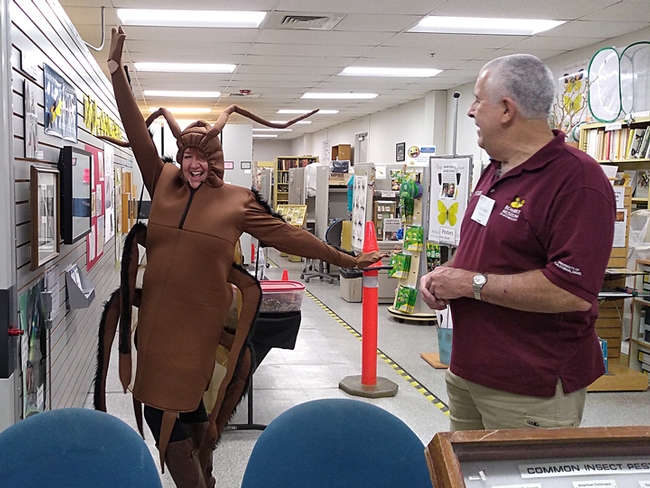
Karey Windbiel-Rojas' cockroach costume proved a crowd pleaser at the Bohart Museum of Entomology open house. Here entomologist Jeff Smith, who curates the butterflies and moths at the Bohart, gives his approval. Windbiel-Rojas, with the UC Statewide Integrated Pest Management Program (UC IPM) is the associate director for Urban and Community IPM. (Photo by Tabatha Yang)
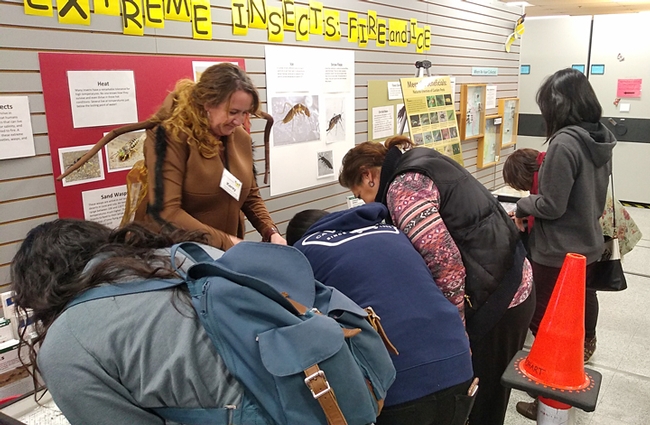
Pests, including cockroaches, drew the rapt attention of this crowd at the Bohart Museum of Entomology. That's Karey Windbiel-Rojas fielding questions. (Photo by Tabatha Yang)
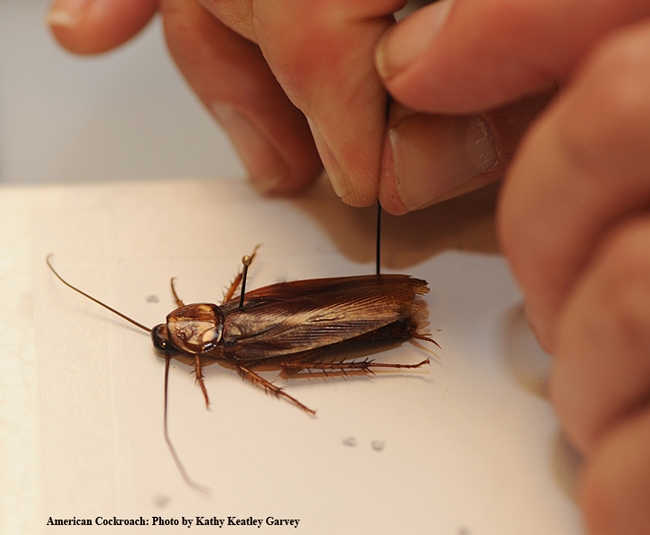
Senior museum scientist Steve Heydon pins an American cockroach. (Photo by Kathy Keatley Garvey)
Apples and Demeter Farming
After Labor Day, I automatically start thinking about apples. And each year, on an autumn weekday, my husband and I head to Apple Hill and visit some of the orchards on the Apple Hill map. We usually bring home frozen baked apple products and a few bags of different kinds of apples. We always stop and buy a caramel apple to split along the way, too, but this year was different.
While visiting Hendy Woods State Park on our way to Fort Bragg, we found a biodynamic (Demeter-certified) apple farm as we were leaving the park. The Apple Farm has a Philo address, but it is next to the California state park. We didn't see any baked goods, but we did buy the best apples I have ever tasted, apples I have not seen at Apple Hill. We brought home bags of Art's Apple and Sierra Beauty. There were at least 10 different types of apples and several pear varieties available for sale the Sunday we were there, but the orchard has over 75 varieties of apples grown on 1700 trees ranging in age from whips to 90 years old. Pears and quince are also grown on the farm. Everything grown or raised on the farm is organic. Some of it is sold at Oxbow Market in Napa and some at the Ferry Building Farmer's Market in San Francisco. At the farm stand, apples, pears, apple juice and cider, apple cider syrup, jams, and other comestibles were available for sale. It is all run on the honor system. Write on the log what you are buying and put the money in the box.
I was surprised to learn that the farm is Demeter certified. There are about 4500 farms worldwide that carry this certification, which has to be reviewed and renewed annually. Demeter agriculture is a comprehensive, organic method of farming that gives back to the soil and livestock that are being raised on the land. No chemicals are used. Pest, diseases, weeds are all addressed by taking care of the soil. Traditional farming tears down the soil, but this method gives back to the soil by treating it, the plants and the livestock on it as a working whole. The focus is on the health of the soil.
I had never heard of this form of biodynamic farming until I visited Benziger Winery last March. The winery tour explained exactly how all the components of the farm are linked together to give back to the soil. Flowers are planted next to the vines to attract pollinators and to repel pest invaders. Fertilizer is from the sheep that are eating the weeds. Compost and compost tea are made from the prunings. Everything gets used and recycled back into the system. These are just a few examples of how each part of the farm is integrally linked with the other components and with the whole closed system.
Having now tasted the best apples ever and sipped some excellent wine, I will definitely be looking for more biodynamic farm products to taste-test.
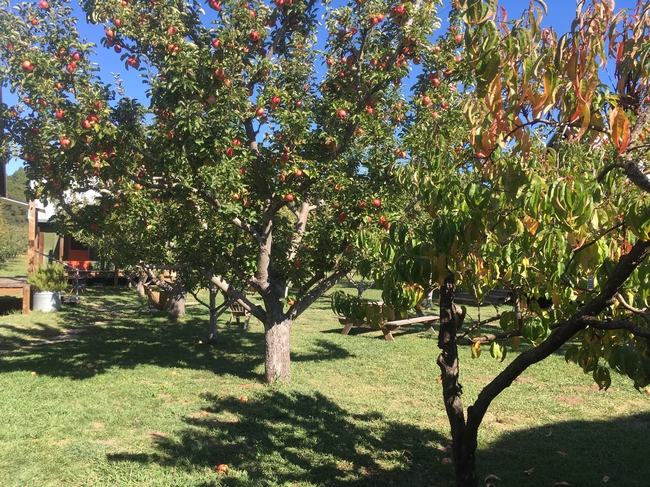
photos by Michelle Davis
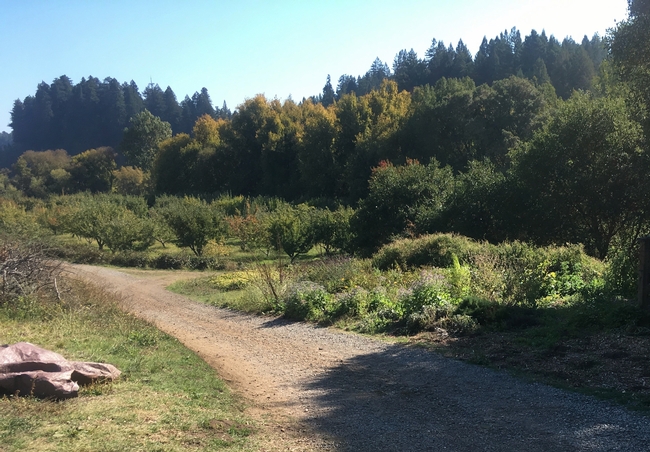
1
Eat a Bug for Giving Tuesday?
#GivingTuesday is November 27! Want to know how you can support the work we do here at the UC...
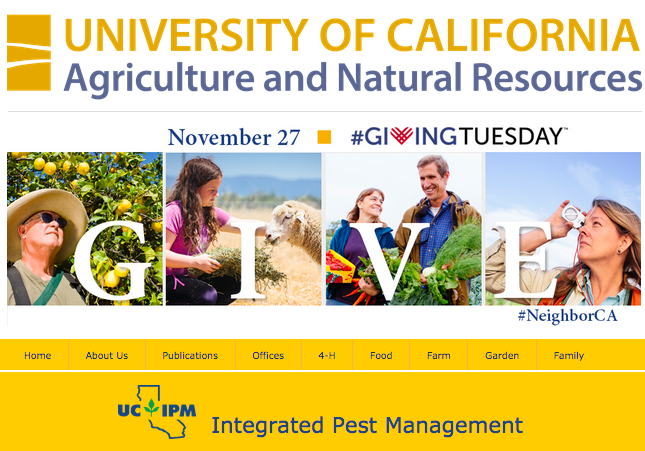
Giving Tuesday UC IPM
'Giving Tuesday': Giving Back to the Bohart Museum of Entomology
"Giving Tuesday," held the first Tuesday after Thanksgiving, is a good day to give back, to say...
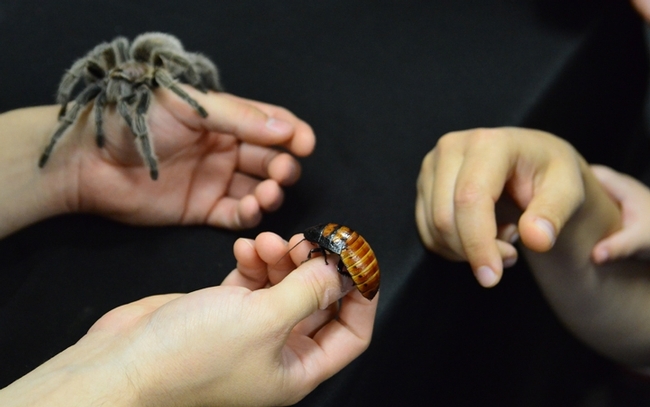
A tarantula and a Madagascar hissing cockroach are favorites at the Bohart Museum of Entomology's live "petting zoo." (Photo by Kathy Keatley Garvey)
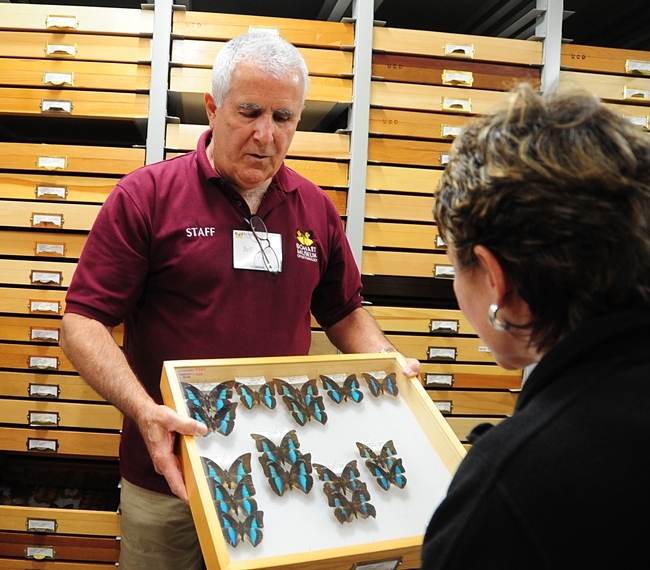
Entomologist Jeff Smith, who curates the moth and butterfly section at the Bohart Museum, shows a visitor some of the butterfly collection. (Photo by Kathy Keatley Garvey)



